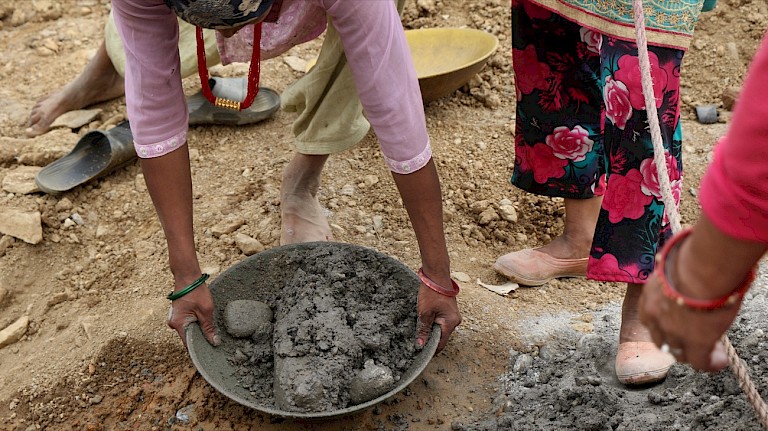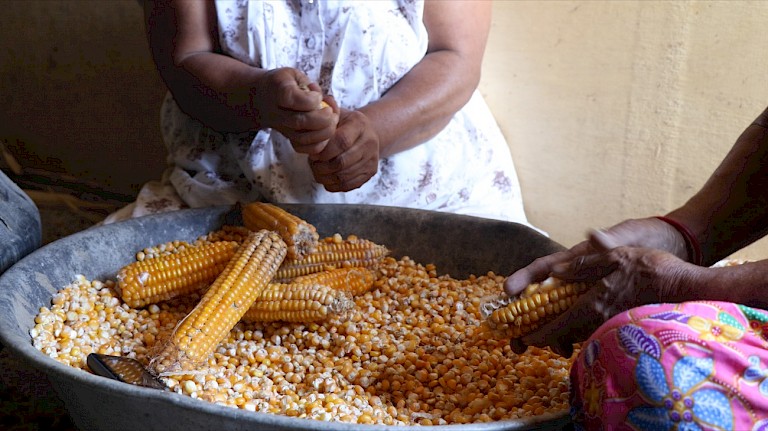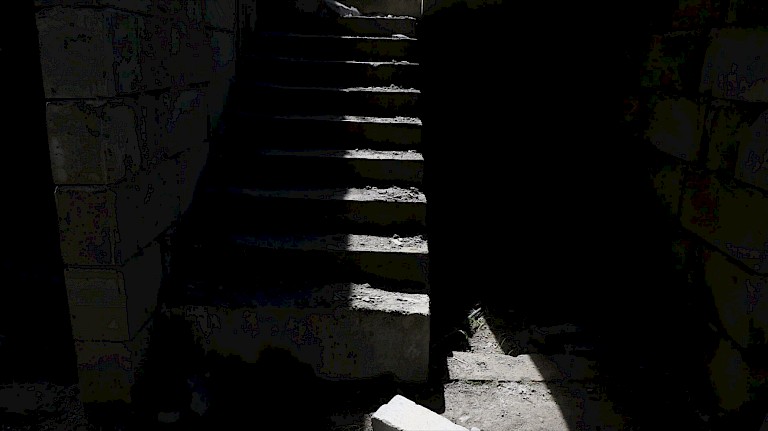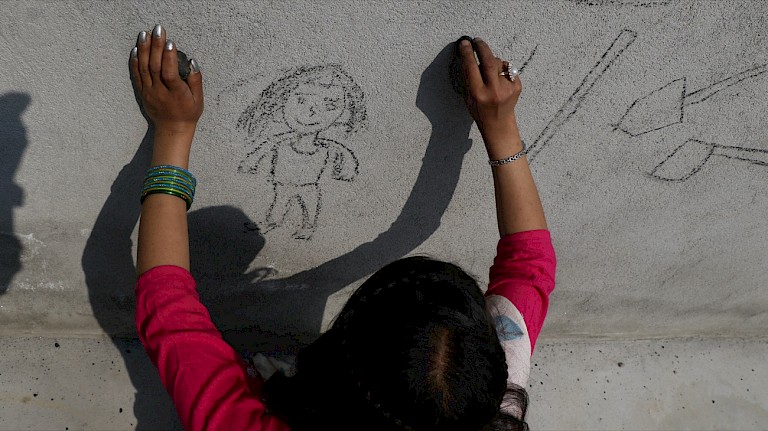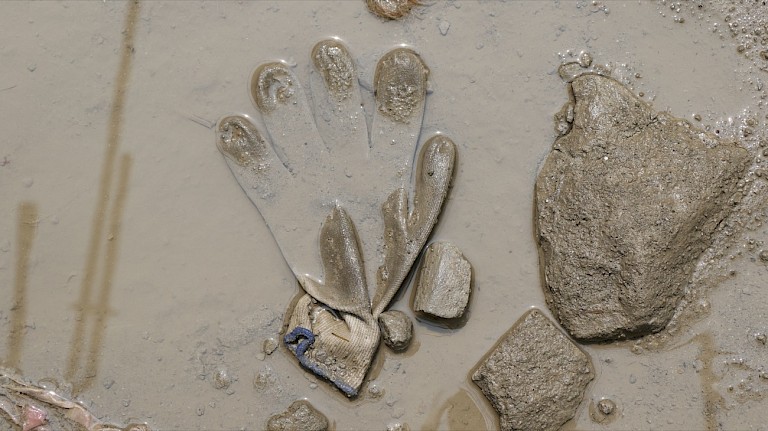



The Artist
Stuti Pradhan is a dedicated member of the Confluence Collective (TCC), a dynamic team of photographers and researchers including Mridu Rai, Avinam Mangar, Sristi Sharma, Anushya Pradhan, and Sheela Bantawa Rai. Together, they unite their skills to establish a vital platform that converges artistry and research emanating from the Darjeeling-Sikkim Himalayas.
Pradhan's mission transcends conventional narratives imposed by colonial legacies. By creating this space, she aspires to present a nuanced understanding of the Hills and its history, one that reflects the diverse voices and experiences of its inhabitants. Through immersive interactions with the local community, she endeavors to cultivate a robust and collaborative environment, stimulating the generation and exchange of knowledge from the margins.
Her work with TCC signifies a collective effort to amplify underrepresented perspectives, fostering a culture of inclusive creativity and research in the region. By dismantling dominant discourses, they hope to illuminate the rich tapestry of stories and insights that have shaped the Darjeeling-Sikkim Himalayas. This endeavor not only redefines how we engage with the landscape, but also empowers its communities by giving voice to their lived experiences.
The Constructing Homelands project emerged from a collaborative endeavor to engage with migrant women actively involved in the informal sector within Sikkim. The core objective was to bring visibility to their lived experiences in both domestic and work environments. Through this, the project sought to contribute to a more empathetic form of policymaking that is deeply rooted in grassroots realities.
Creative Goal and Methodology
The creative goal of Constructing Homelands was to facilitate visual storytelling, encompassing various mediums such as photographs, short films, journaling, photo mapping, and sketches. These narratives emerged organically through ongoing participatory exchanges and conversations with the migrant women. This approach aimed to empower them to share their stories in their own voices and perspectives.
Challenges Faced
The project leaders, researchers, and participating artists encountered several challenges throughout the initiative. Establishing rapport with the community proved to be a significant hurdle, given the diverse socio-economic backgrounds of the researchers and participants. Overcoming language barriers, which carried subtle nuances of social and economic statuses, was particularly complex. Gaining trust and credibility within the community, while elucidating the project's goals and objectives, was another intricate aspect. Additionally, navigating the ethical implications of ethnographic research, including the balance between participant observation and influencing, posed an internal challenge.
Methods of Community Participation and Engagement
Participatory Picnics: These gatherings provided a relaxed and familiar environment for participants to share their experiences. Families of the participants also showed enthusiasm in participating, creating a sense of communal support.
Journal Writing: Participants who found it challenging to vocalize their stories were encouraged to express themselves through written journals.
Zinemaking and Photography: Introducing these creative outlets enabled participants to communicate and narrate their stories visually. Sharing their creations on platforms like WhatsApp further facilitated connection and expression
Pin the Map (Trace the Path): This method involved creating a visual map of the migrants' places of origin and their routes to work and settlement. Participants pinned these locations while reminiscing about their past, creating a tangible representation of their migration journey.
Flexible Outcome and Participant-Centric Design
The material outcome of the project was intentionally kept flexible, allowing for emergence influenced and designed by the participants based on their unique backgrounds and perspectives. This approach embodies a key tenet of design thinking – adapting solutions to meet the needs and capacities of the community.
Empathy-Driven and Inclusive Design
The methods of participation and engagement were tailored to the comfort and capacity of the participants, aligning with the principles of design thinking. Recognizing that communities communicate their challenges in diverse and nuanced ways, the project encouraged the emergence of methods that influenced and shaped the final outcome. This design approach prioritizes empathy and encompasses multiple narratives, ultimately enhancing the understanding of complex social issues.
The impact of the Constructing Homelands project has been profound and far-reaching, transcending traditional boundaries of engagement and policy-making. Through its innovative approach, this collaborative endeavor has not only elevated the voices of migrant women in Sikkim but has also paved the way for a more inclusive and empathetic framework for policymaking.
The exhibition "Constructing Homelands" at KHOJ, New Delhi's Threading the Horizon group display stands out as a testament to the power of socially-engaged art practices. By integrating art and research, it paints a vivid narrative of migration, identity, and community, and resonates profoundly in contemporary times.
From the outset, it was evident that the exhibition was firmly grounded in empathy, ethics, and participation. This commitment to a participatory ethos was underlined by the genuine relationships nurtured between the project team and the participants. Their collaborative endeavors provided insights into the experiences and memories of migrants, and their journey from Nepal to Sikkim. The rich tapestry of the visual and textual presentation added depth, attracting audiences with its multifaceted approach.
What distinguished this exhibition was its refusal to resort to idealization. Instead, the project took a brave stance in presenting a nuanced portrayal, backed by extensive research. This research was not merely an accumulation of data; it represented a deeply analytical and interpretative synthesis of the migrants' stories, memories, and experiences.
However, the real success of the exhibition might lie in its ability to foster critical dialogue. As intended by its creators, "Constructing Homelands" has spurred a myriad of questions, especially concerning its interdisciplinary methods and the challenges posed by such an ambitious confluence of art and research. Issues like ethical considerations when handling sensitive subjects like gender violence, the intersection of art and research, and the challenges of involving policymakers were at the forefront of these discussions.
The project was not without its challenges. In the field, especially at the construction site which became a hub for the ethnographic study, there were inevitable dilemmas. While many were actively involved in the project's co-creation, understanding the intricate nuances of "socially engaged art" proved daunting for some. This highlighted the team's responsibility in ensuring that their practice was continually reflective and adaptable.
The reactions from women at the construction site further enriched the narrative. Their interest and involvement in group activities underscored their longing for representation. Yet, the skepticism shown by some was a vital reminder of the challenges posed by any form of perceived extraction. Their resistance wasn't an obstacle but an affirmation of their agency.
One particular activity, "Tracing Our Path," offered a poignant insight into the migratory journey of these participants. Through a map of archival images, the participants could reconnect with their past. While many delved into nostalgia, recalling personal memories associated with specific places, others struggled to identify with the images. This disparity underscored the importance of building rapport and understanding the diverse reactions and emotions of the community.
Looking ahead, the project aims to redefine conventional policymaking with its concept of the 'Act of Listening.' This proactive approach, which prioritizes genuine engagement and empathy over detached observation, has the potential to reshape policy landscapes.
In conclusion, "Constructing Homelands" is more than an art exhibition. It is a clarion call for empathetic engagement, a celebration of community stories, and a reminder of the transformative power of art in shaping societal narratives. Its impact resonates deeply, prompting us to listen, reflect, and engage with the world around us in more meaningful ways.
